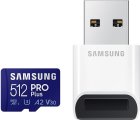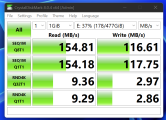Latest purchase/home improvement project: I extended my home internet to an outbuilding roughly 400 feet away using two $39 TP-Link antennas:
https://www.tp-link.com/us/business-networking/outdoor-radio/cpe210/
This is a p2p (“point to point”) system. I have one unit hooked into my home router, connected through the wall and aimed at my barn. This is called the AP (access point). On the barn is an identical unit called the client.
In theory these things can broadcast a mile or more. They only transmit to the client unit, not broadly all around your house (though those exist, they are very expensive to get broad coverage at a distance).
I have fiber internet at my house, currently paying for 250 Mbps down. The cheap transmitters I chose “only” max out at 100 Mbps; I am getting about 75-85 down at the barn, but need to fine-tune the antenna orientations. That is plenty for me in an outbuilding.
You can get more expensive units which in theory get you closer to a gigabit internet. From what I read, at 300-500 feet, using a basic 2.4 gHz model is actually as good or better than 5 gHz, which is more suited for longer range. (There are industrial-grade options meant mostly for large farms.)
Details:
Before installing each antenna outdoors, I had to go through a pretty technical setup process to pair the two units. I could not find any brand which pre-pairs the AP and client, which is annoying. After watching a bunch of YouTube videos and reading the (lousy) manual, I figured it out. This requires some knowledge of networking or at least a lack of fear of computers.
The units are white, so I coveref them with a Rustoleum outdoor spraypaint for adhesion, then painted them with my house/barn color. The company claims paint won’t affect transmission.
You do need a clear line of sight between the two antennas. Some light vegetation may still be OK, but the less the better.
Other items needed were two brackets, miscellaneous ethernet cables, and a router for my barn (I had a spare).
My cost was under $100, not counting through router plus the necessary drill and drillbit to get through the walls, which I had. I also used some Great Stuff and cheap ring to seal the exterior hole.
NOTE: When drilling through walls, you want to angle these upward from outside to inside, so rain can’t run in. I also tied a “drip loop” in the cable for good measure.
My other conceivable options were (a) very expensive trenching and conduit installation for underground-grade ethernet cable; (b) paying my internet provider to install a whole second account—which they claimed was my only option; or (c) internet via a powerline, which is a nifty technology but was not feasible here.



